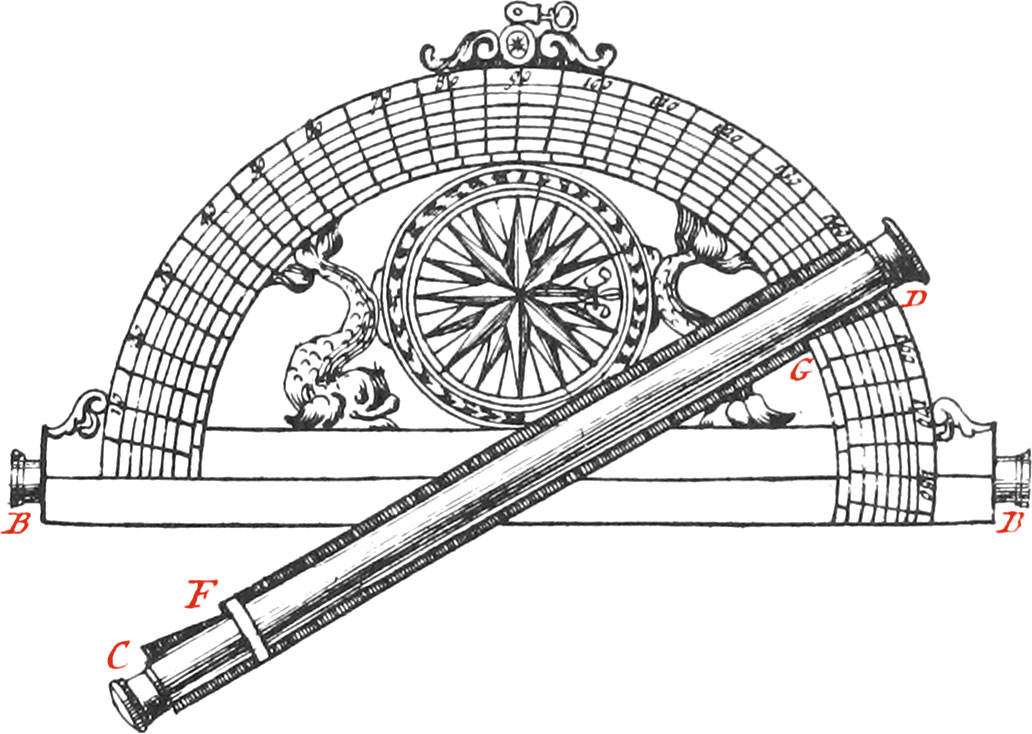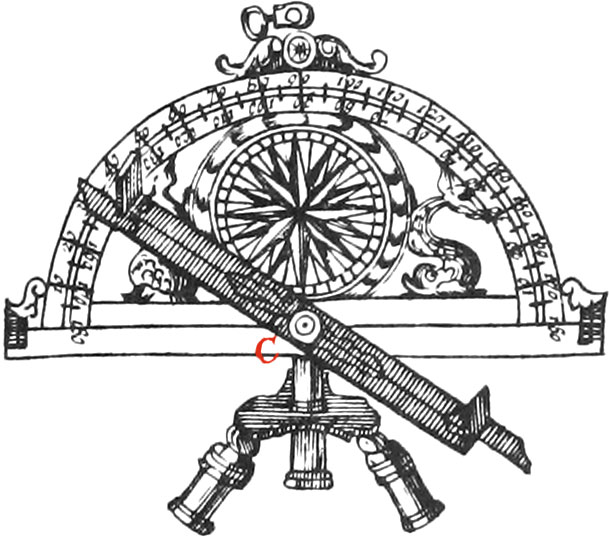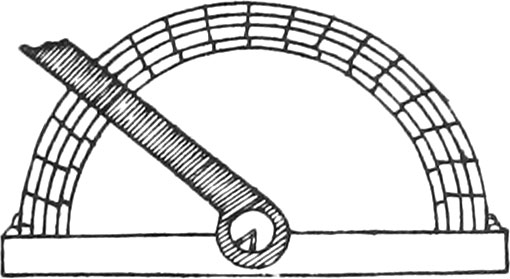These Instruments which are also called Graphometers, are made of beaten or cast Brass, from 7 Inches Diameter to 15; the Divisions of them are made in the same manner as those of the Theodolite and Quadrant, before explained. The simplest of these Instruments, is that of Fig. K; at the Ends of it’s Diameter, and in little square Holes made upon the fiducial Line, there is adjusted two fixed Sights, fastened with Nuts underneath, and upon it’s Center there is a moveable Index furnished with two other Sights, made in the same manner as those before-mentioned for the Theodolite, and which is fastened with a Screw. There is a Compass placed in the Middle of it’s Surface, for finding the North Sides of Planes. There is also fixed underneath to it’s Center, a Ball and Socket, like that mentioned in the Construction of the Theodolite, and for the same Use.
Note, These Instruments ought to be well straightned with hammering; then they must be fashioned with a rough File, and afterwards smoothed With a Bastard-File, and a fine one. When they are filed enough, you must see whether they are not bent in filing; if they are, they ought to be well straightned upon a Stone, or very plain Piece of Marble; then they must be rubbed over with Pumice-Stone and Water, to take away the Tracts of the File. To polish Semi-Circles well, as also any other Instruments, you must use German-Slate Stone, and very fine Charcoal, so that it does not scratch the Work: afterwards, to brighten them, you must lay a little Tripoli, tempered in Oil, upon a Piece of Shamoy, and rub it over them.
The Semi-Circle I, carries Telescopes for seeing Objects at a good Distance, and has the Degrees of it’s Limb divided into Minutes, by right-lined or curved Diagonals, as in the Quadrant before-mentioned.
There is one Telescope placed underneath along the Diameter of the Semi-Circle, whose Ends are BB; and another Telescope adjusted to the Index of the Semi-Circle. When the fiducial Line cuts the Middle of the Index, the Telescope fastened to it must be a little shorter than the Index, to the End that the Degrees cut by the fiducial Line may be seen; but the best way is for the Telescopes to be of equal Length, and then the fiducial Line must be drawn from the End C, passing thro’ the Center of the Semi-Circle, and terminating in the opposite End D. The two Ends of the Index are cut so as to agree with the Degrees upon the Limb, as may be seen at the places CF, GD, in such manner that the Line CFEGD, may be the fiducial Line of the Semi-Circle.
Note, The Degrees on this Semi-Circle do not begin and end at the Diameter, as in others; but at the Lines CF, GD, when the Telescopes are so placed over each other, that the visual Rays agree. To make which, the little Frame carrying the cross Hairs, must be moved backwards or forwards by means of Screws. The Breadth from the Middle of the Telescope, to the Points F, G, is commonly about 5 Degrees; and this is the Reason why the Divisions begin further from the Diameter than they end, as may be seen per Figure.
These Telescopes have two or four Glasses, and have a very fine Hair strained in the Focus of the Object-Glass, serving for a Sight.
Telescopes with four Glasses shew Objects in their true Situation, but those with two Glasses invert them; so that that which is on the right Hand appears on the left, and that which is above appears below: but this does not at all hinder the Truth of Operations, because they always give the Point of Direction.







